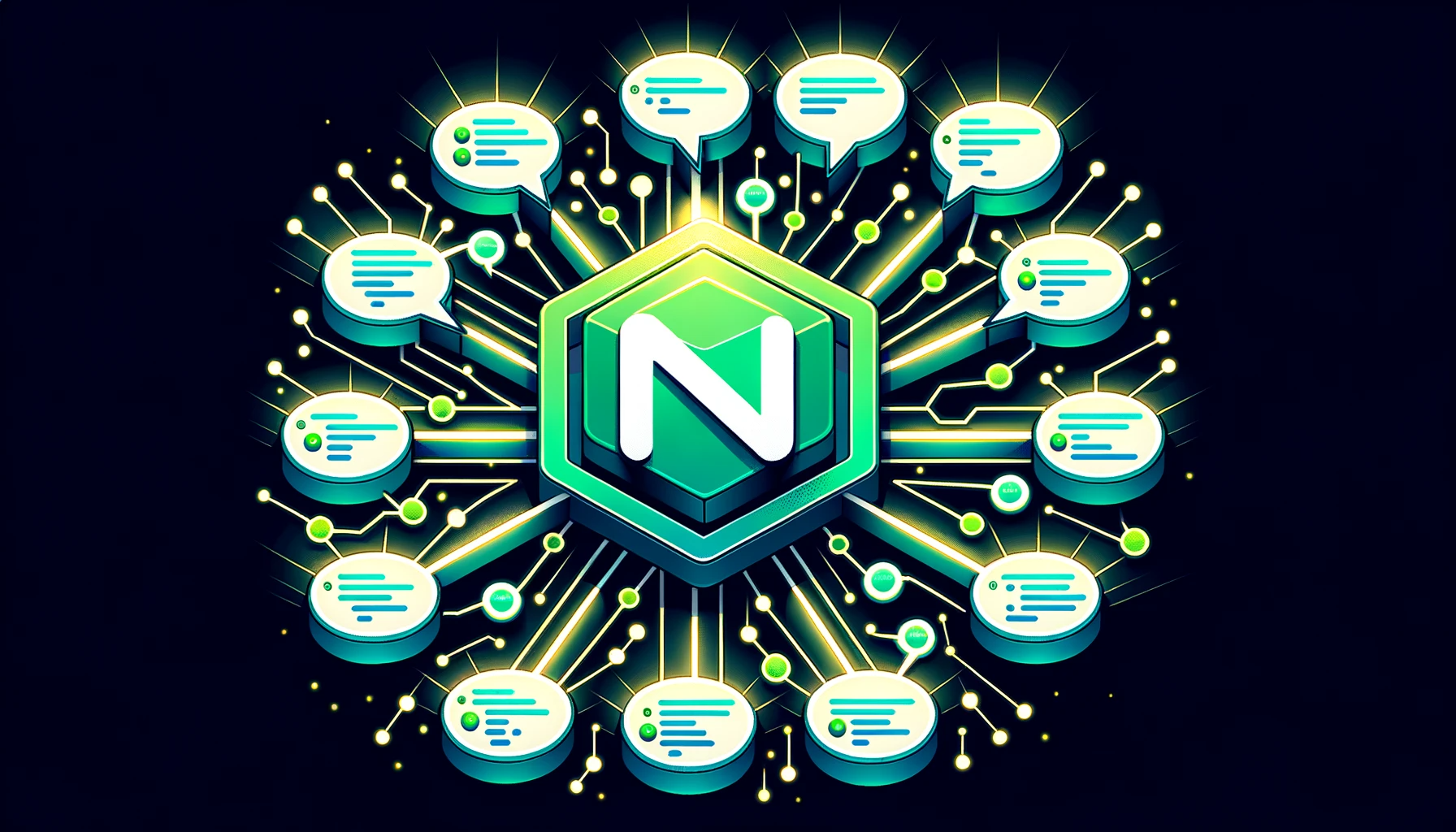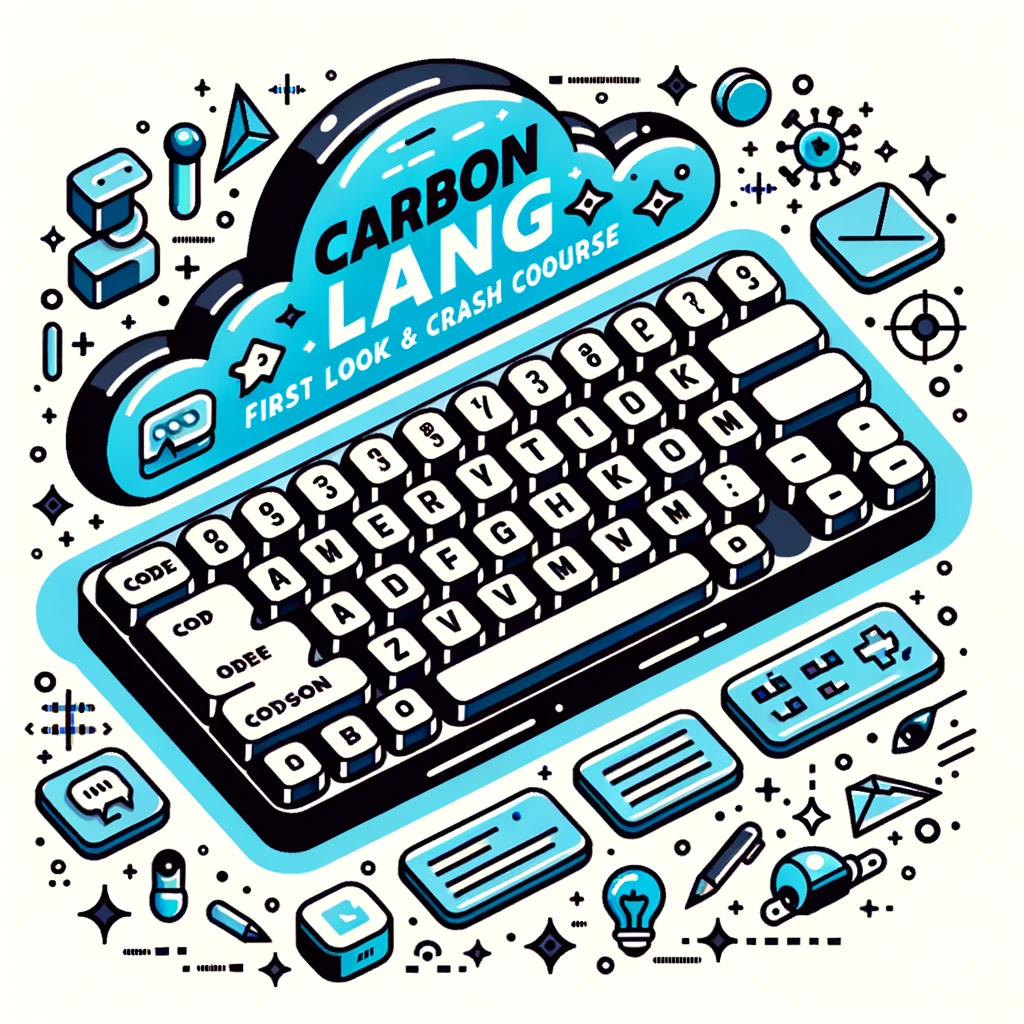In “Write A ChatGPT Chatbot With Node.js,” Traversy Media presents a video tutorial on building an AI chatbot using Node.js. The tutorial covers step-by-step instructions on integrating the OpenAI library and the ChatGPT API to create the chatbot. It explores topics such as saving chat history, differentiating user and bot responses with colors, and incorporating user input through the readline-sync package. By following the tutorial, viewers will gain the knowledge and skills to develop their own AI chatbot using Node.js and the ChatGPT API. The video also discusses future projects that will delve into exploring the features of the API and showcasing new function calls.
In the video, Traversy Media demonstrates the process of building an AI chatbot using Node.js and the OpenAI GPT API with the GPT 3.5 Turbo model. The tutorial provides a demo of the chatbot’s functionality and showcases its ability to engage in ongoing conversations. Additionally, the video covers essential elements such as saving chat history, sending messages to the API, and displaying API responses in different colors. Traversy Media’s aim is to empower viewers to create their own chatbots and encourages them to expand on the project, while also mentioning future projects that will explore advanced features and function calls.
Understanding Node.js and ChatGPT
Node.js is an open-source JavaScript runtime environment that allows developers to run JavaScript on the server-side. It provides a powerful, scalable, and efficient platform for building server-side and networking applications. With its event-driven, non-blocking I/O model, Node.js is well-suited for building real-time applications such as chatbots.
ChatGPT is an AI language model developed by OpenAI. It is designed to generate human-like responses to text-based prompts. ChatGPT can understand and respond to a wide range of conversational queries, making it an ideal choice for developing chatbot applications.
Why use Node.js with ChatGPT
Node.js provides several advantages when building chatbots with ChatGPT:
- JavaScript-based Development: Since Node.js is based on JavaScript, developers can leverage their existing JavaScript skills to build chatbots. This reduces the learning curve and allows for faster development.
- Asynchronous and Non-blocking: Node.js’ asynchronous, non-blocking event-driven architecture enables chatbots to handle multiple concurrent requests without compromising performance. This is crucial for real-time applications like chatbots that require quick and responsive interactions.
- Rich Ecosystem: Node.js boasts a vast ecosystem of libraries and frameworks that can be leveraged to enhance chatbot development. This includes libraries for handling user input, parsing text, and integrating with external APIs.
- Scalability: Node.js is known for its scalability, allowing chatbots to handle high levels of traffic and concurrent users. Whether it’s a small-scale chatbot or a large-scale enterprise application, Node.js provides the necessary tools and architecture to scale seamlessly.
Setting Up Your Environment
Before diving into building a chatbot with Node.js and ChatGPT, it’s essential to set up your development environment. Here are the necessary steps to get started:
Initializing a package.json file
To begin, navigate to the root directory of your project in the terminal and run the following command:
npm init -y This will create a package.json file in your project directory, which will track the dependencies and configuration of your Node.js project.
Installing necessary dependencies
Next, you’ll need to install the required dependencies for your chatbot project. The main dependencies include the OpenAI library, readline-sync for user interaction, dotenv for managing environment variables, and colors for console formatting. Run the following command to install them:
npm install @openai/api readline-sync dotenv colors Setting up API key with dotenv
To securely store and access your OpenAI API key, you’ll use the dotenv package. Create a .env file in the root directory of your project and add the following line, replacing YOUR_API_KEY with your actual OpenAI API key:
OPENAI_API_KEY=YOUR_API_KEY Make sure to add the .env file to your .gitignore to prevent it from being committed to version control.
Configuring the OpenAI object
In your index.js file (or the main script file), import the necessary modules and set up the OpenAI object using the configured API key from dotenv. Here’s an example of how to do this:
require('dotenv').config(); const openai = require('@openai/api'); const openaiApiKey = process.env.OPENAI_API_KEY; const openaiInstance = new openai.OpenAIApi(openaiApiKey); With these initial setup steps, your development environment is ready for building the chatbot functionality.
Understanding the OpenAI Library
The OpenAI library is a vital component of our project as it enables us to interact with the ChatGPT API. It provides a convenient interface for making API calls, handling responses, and managing conversations. By integrating the OpenAI library into our Node.js projects, we can leverage the AI capabilities of the ChatGPT API easily.
Importance of OpenAI library in the project
The OpenAI library simplifies the integration of ChatGPT into our Node.js application. It abstracts away the complexities of making API requests and handling responses, providing higher-level functions for interacting with the ChatGPT API. This saves time and effort by streamlining the development process.
Furthermore, the OpenAI library provides additional features like conversation history management, which allows us to maintain context and have meaningful back-and-forths with the chatbot. This is crucial for creating a natural and engaging chatbot experience.
Integrating the OpenAI library into Node.js projects
To integrate the OpenAI library into your Node.js project, you first need to install its package using npm. As mentioned earlier, run the following command in your project directory:
npm install @openai/api Once the package is installed, you can import and use it in your code. Here’s an example of how to import and authenticate with the OpenAI API:
const openai = require('@openai/api'); const openaiApiKey = 'YOUR_API_KEY'; const openaiInstance = new openai.OpenAIApi(openaiApiKey); Replace 'YOUR_API_KEY' with your actual OpenAI API key. It’s a good practice to store the API key securely, such as using environment variables with dotenv, to avoid exposing it in your codebase.
With the OpenAI library integrated, you can start utilizing its functions and methods to build the chatbot’s conversational capabilities.
Implementing Chatbot Functionality
Now that we have our environment set up and the OpenAI library integrated, we can begin implementing the chatbot functionality. This section will guide you through the steps required to create a chatbot that can engage in interactive conversations with users.
Creating a while loop
To enable continuous back-and-forths with the chatbot, we’ll wrap the chatbot’s functionality in a while loop. This allows the chatbot to keep responding to user inputs until a specific condition is met.
while (true) { // Chatbot logic goes here } The while loop ensures that the chatbot remains active until explicitly terminated or until a specific exit condition is met.
Prompting for user input
Within the while loop, we need to prompt the user for input. We’ll use the readline-sync package to facilitate interaction with the user. In each iteration of the loop, we’ll prompt the user to enter their message and store it in a variable.
const readline = require('readline-sync'); while (true) { const userMessage = readline.question('User: '); // Further chatbot logic } The readline.question method prompts the user for input and returns the entered string.
Making API calls
With the user’s input captured, we can pass it to the ChatGPT API using the OpenAI library. The library provides a convenient openaiInstance.complete method for making API calls and receiving responses.
while (true) { const userMessage = readline.question('User: '); const prompt = `User: $\nChatGPT:`; const response = await openaiInstance.complete({ engine: 'text-davinci-003', prompt, maxTokens: 100, temperature: 0.7, n: 1, stop: '\n', }); // Further chatbot logic } The complete method takes an object containing various parameters like the model/engine to use, the input prompt, the maximum number of tokens in the response, the temperature of the model’s output, and the stop sequence to indicate the end of the response.
Updating the chat history
To maintain context and enable meaningful conversations, we need to update and store the chat history. Each iteration of the loop, we’ll append the user’s message and the chatbot’s response to the chat history.
const chatHistory = []; while (true) { const userMessage = readline.question('User: '); const prompt = `User: $\nChatGPT:$`; const response = await openaiInstance.complete({ engine: 'text-davinci-003', prompt, maxTokens: 100, temperature: 0.7, n: 1, stop: '\n', }); chatHistory.push({ role: 'User', content: userMessage }); chatHistory.push({ role: 'ChatGPT', content: response.choices[0].text }); // Further chatbot logic } By updating the chat history on each iteration, we create a continuous conversation flow and allow the chatbot to reference previous messages for context.
Ending the chat session
To provide a way for the user to exit the chatbot session, we’ll add a condition to break out of the while loop. This condition can be triggered by the user by entering a specific command or phrase.
while (true) { const userMessage = readline.question('User: '); if (userMessage.toLowerCase() === 'exit') { break; } // Chatbot logic } If the user enters “exit” (case-insensitive), the loop will terminate, and the chatbot session will end.
Working with Chat History
Maintaining chat history is crucial for an interactive chatbot that can respond contextually and carry on meaningful conversations. There are several ways to manage chat history in a Node.js and ChatGPT application.
Importance of maintaining chat history
By storing and updating the chat history, the chatbot can have a reference to previous user queries and responses. This enables the chatbot to provide relevant and context-aware responses to user inputs, resulting in a more engaging and interactive conversation.
Sending the entire message history to an API
To incorporate chat history into the ChatGPT API calls, we’ll append the previous user messages and chatbot responses to the prompt. By including the complete history, the model can better understand the ongoing conversation and generate more relevant responses.
let chatHistory = []; while (true) { const userMessage = readline.question('User: '); const prompt = `User: $\nChatGPT:$`; // Chatbot logic chatHistory.push({ role: 'User', content: userMessage }); chatHistory.push({ role: 'ChatGPT', content: response.choices[0].text }); } By concatenating all the chat history messages into the prompt, we ensure the model is aware of the entire conversation and can provide accurate and coherent responses.
Saving chat logs in files
For logging and analysis purposes, it may be useful to save the chat logs in files. This allows for record-keeping and enables further analysis of the chatbot’s performance and interactions.
const fs = require('fs'); let chatHistory = []; let chatLog = ''; while (true) { const userMessage = readline.question('User: '); const prompt = `User: $\nChatGPT:$`; // Chatbot logic chatHistory.push({ role: 'User', content: userMessage }); chatHistory.push({ role: 'ChatGPT', content: response.choices[0].text }); chatLog += `User: $\nChatGPT: $\n`; fs.writeFile('chatlog.txt', chatLog, (err) => { if (err) { console.error('Error saving chat log:', err); } }); } By saving the chat logs in a text file, you can easily refer back to previous conversations or analyze them for insights and improvements.
Refining User Interaction
To enhance the user’s experience and differentiate between user and bot responses, you can implement certain features using additional packages and techniques.
Using readline-sync package for user interaction
To provide a more interactive and synchronous user experience, you can leverage the readline-sync package. This package allows you to prompt the user for input and wait for their response before proceeding with the chatbot logic.
const readlineSync = require('readline-sync'); while (true) { const userMessage = readlineSync.question('User: '); // Chatbot logic if (userMessage.toLowerCase() === 'exit') { break; } } The main advantage of using readline-sync is that it makes the chatbot’s interaction feel more natural and conversational.
Differentiating user and bot responses with colors
To visually distinguish between user and bot messages in the console output, you can use the colors package. This package provides utilities for adding colors to text in the terminal.
const colors = require('colors'); while (true) { const userMessage = readlineSync.question('User: '); console.log(colors.green(`User: $`)); // Chatbot logic console.log(colors.blue(`ChatGPT: $`)); // More chatbot logic if (userMessage.toLowerCase() === 'exit') { break; } } By adding colors to the user and bot messages, you can improve readability and make the conversation flow more intuitive.
Exploring Advanced Features
Once you have built the basic chatbot functionality, you can explore advanced features and possibilities offered by the OpenAI library and other APIs. Some areas to explore include:
Exploring new function calls
The OpenAI library provides various methods and function calls that can enhance the capabilities of your chatbot. You can dive deeper into the library’s documentation and experiment with different function calls to achieve more advanced features and interactions.
Integrating different APIs
In addition to the ChatGPT API, you can explore integrating other APIs and services to expand the functionality of your chatbot. This could include language translation APIs, sentiment analysis APIs, or even external data sources to provide real-time information.
By combining multiple APIs, you can create a more comprehensive and versatile chatbot that can cater to a wider range of user needs.
Understanding the Code Structure
To better understand the implementation details, it’s essential to read and comprehend the provided Python script. This script serves as the foundation for building the chatbot with Node.js and the OpenAI GPT API.
By analyzing the code structure, logic, and interactions between different components, you can gain insights into how the chatbot functions and make necessary modifications or additions based on your requirements.
Expanding the Project
Once you have successfully built the basic chatbot with Node.js and the ChatGPT API, you can take further steps to enhance its functionality and derive more value from it.
Important tips to enhance the functionality of your chatbot
- Improve Natural Language Understanding: Analyze user feedback and iterate on your chatbot’s language model to enhance its ability to understand and respond to a wide range of user queries.
- Handle Edge Cases: Identify and handle edge cases where the chatbot might provide inaccurate or incorrect responses. Continuously refine and update your chatbot’s responses to handle such scenarios.
- Optimize Performance: Analyze the performance of your chatbot and optimize resource usage and response time. Consider implementing caching mechanisms or using pre-trained models to speed up response generation.
How to derive more value from your chatbot
- Integrate with Existing Systems: Explore ways to integrate your chatbot with existing business systems or applications to streamline processes and provide additional value to users.
- Collect User Feedback: Implement mechanisms to collect user feedback and use it to improve your chatbot’s performance and user satisfaction. Regularly analyze feedback and make necessary adjustments to enhance the chatbot’s capabilities.
- Implement Analytics and Reporting: Set up analytics and reporting to track key metrics and gather insights into user behavior, usage patterns, and areas for improvement. Leverage this data to optimize your chatbot’s functionality and enhance the overall user experience.
Conclusion
Building a ChatGPT chatbot with Node.js opens up a world of possibilities for creating powerful and engaging conversational applications. By leveraging the OpenAI library, you can integrate the ChatGPT API seamlessly into your Node.js projects and provide users with a natural and interactive chatbot experience.
Throughout this article, we covered the essential steps required to set up your development environment, understand the OpenAI library, implement chatbot functionality, and refine user interaction. We also explored advanced features, code structure, and expanding the project’s functionality to derive maximum value from your chatbot.
With Node.js and ChatGPT, you have the tools and technologies to create intelligent chatbots that can cater to diverse user needs. Whether it’s for customer support, information retrieval, or entertainment, your chatbot can deliver personalized and human-like responses, making it a valuable asset in various domains.
Building a chatbot is just the beginning. Once you have honed your skills and created a working chatbot, you can further refine and expand it, enabling it to handle more complex tasks and enhance user satisfaction. So, take the knowledge and tools you have gained from this article and embark on your journey to create innovative and powerful chatbot applications.










